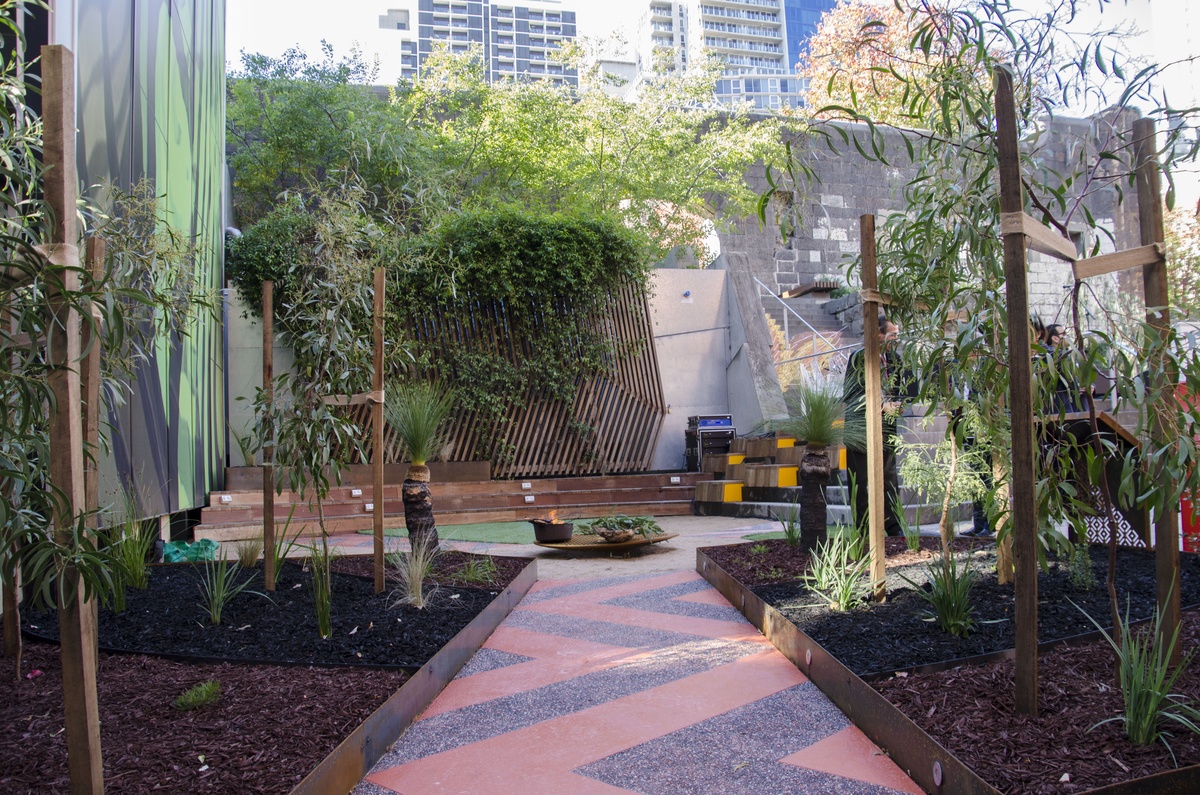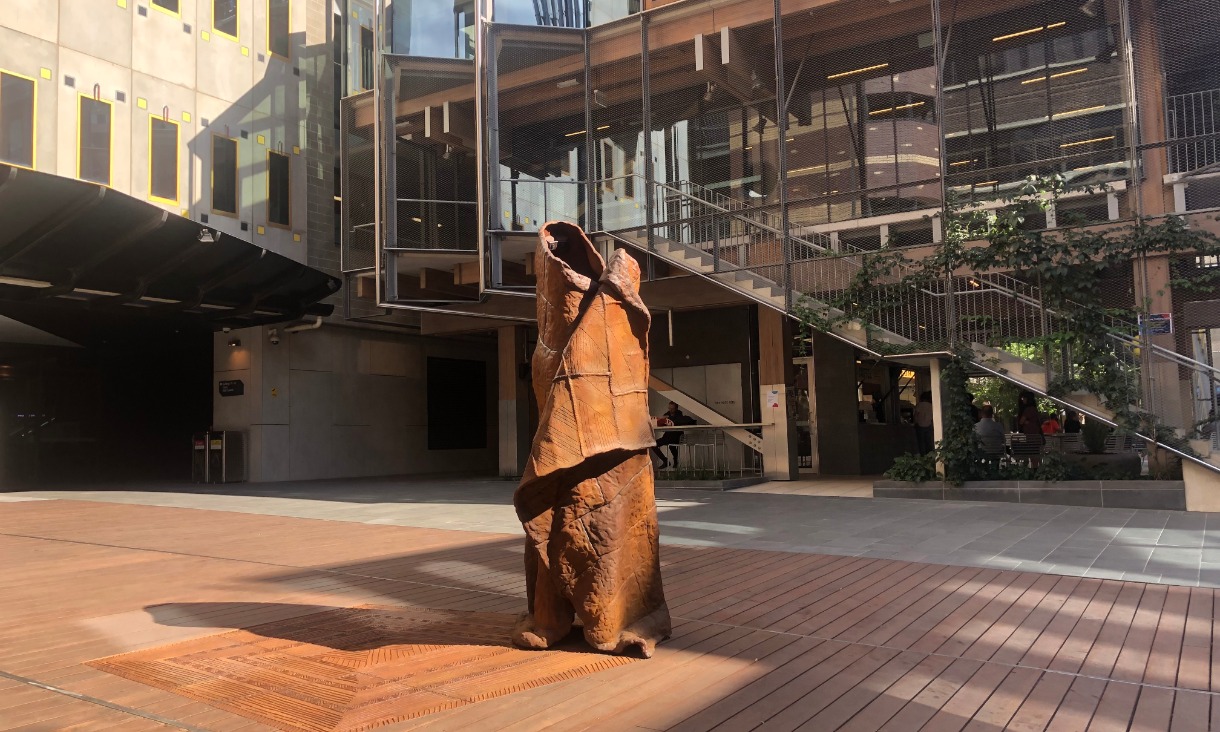As an Australian Institution with its core on the Aboriginal Country of the Kulin Nation, RMIT’s places provide an opportunity to celebrate Indigenous peoples and cultures and tangibly demonstrate our commitment to reconciliation. Place holds deep, ongoing cultural significance for First Nations peoples.
RMIT acknowledges the role of country and the relationships with country held by Traditional Custodians and understands that place and identity are intrinsically tied together in Indigenous cultures. RMIT’s Act enjoins us to “use our expertise and resources to involve Aboriginal and Torres Strait Islander people of Australia in its teaching, learning, research and advancement of knowledge activities.”
Through our strategy the RMIT Community – as a collective and individuals – commits to respectful ways of working and understanding that acknowledge the experiences, history and knowledge of Aboriginal and Torres Strait Islander peoples. We actively strengthen relationships between Indigenous and non-Indigenous peoples for the benefit of all Australians and the communities in which RMIT operates.
RMIT recognises the importance of Indigenous knowledge in preserving and protecting place for current and future generations. As a community, we are developing new ways of knowing, being and doing, based on our commitment to reconciliation. In our Victorian locations, for example, the Bundjil Statement outlines our dhumbali (promise/commitment) to Bundjil and offers everyone a frame for living and working lawfully and respectfully in place.
Through our locations and wider ecosystems, RMIT recognises and celebrates Indigenous knowledge and connections to place. Along with commissioned spaces such as the Ngarara Willim, gathering place, and the Wurrunggi Biik sculpture at the city campus, we care for and engage with significant sites such as the Keelbundoora Scarred trees (at RMIT’s Bundoora Campus). RMIT promotes and supports Indigenous arts and enterprise, and celebrates the unique contributions that First Nations people make in our communities. Our Trade Routes program (run by RMIT’s Activator) helps First Nations businesses to grow and scale and promotes Indigenous business nationally and internationally.
RMIT is an Australian institution with character uniquely tied to the Australian landscape, and with a deep respect for First Nations peoples and cultures. In our international locations, we continue to shape communities and spaces that celebrate First Nations peoples and cultures. At the same time, we also recognise and celebrate other local peoples and cultures.
RMIT recognises that globally, “Indigenous Peoples are distinct social and cultural groups that share collective ancestral ties to the lands and natural resources where they live, occupy or from which they have been displaced. The land and natural resources on which they depend are inextricably linked to their identities, cultures, livelihoods, as well as their physical and spiritual well-being.” [Indigenous Peoples Overview (worldbank.org)]

